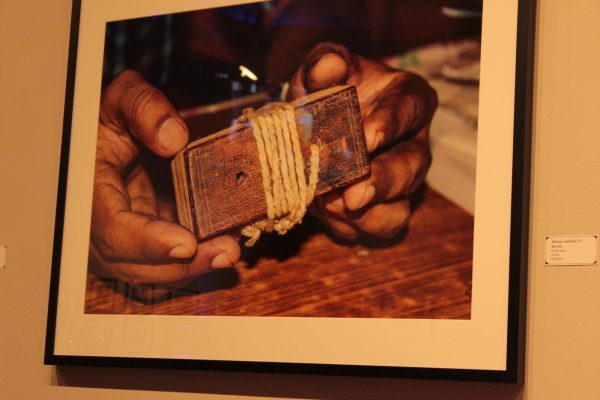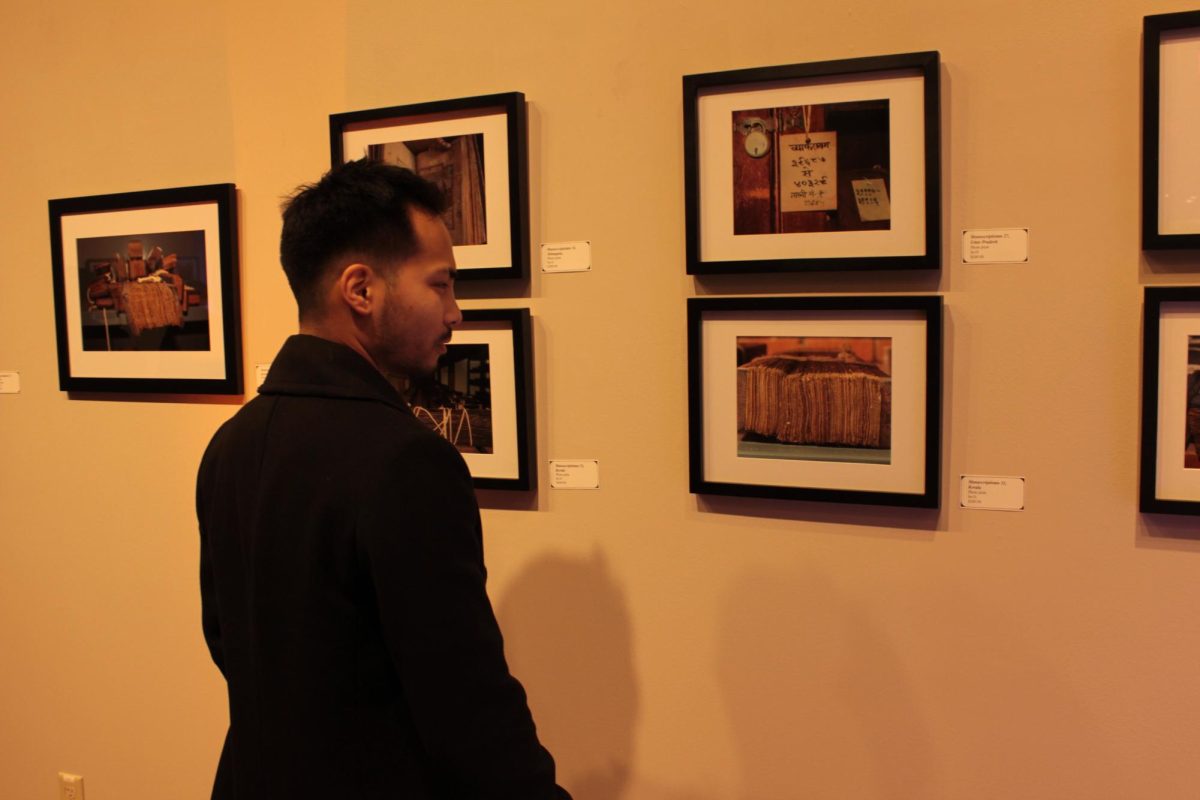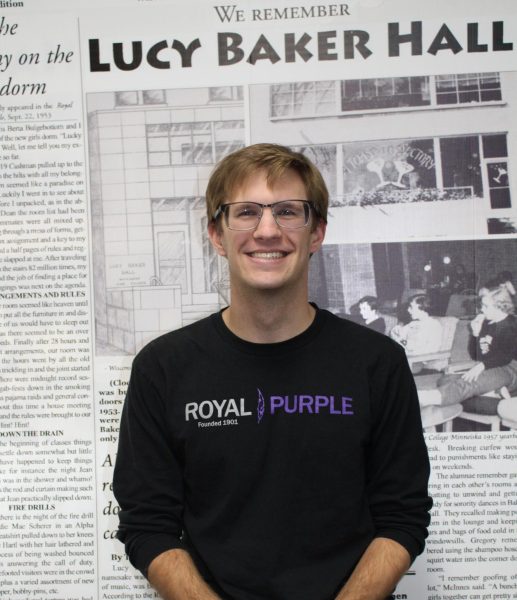Roberta’s Art Gallery in the UC has welcomed a wide variety of exhibits over the semester. Until Dec. 11, UW-Whitewater students and anyone in the Whitewater community may visit the gallery to gaze upon a series of photos which capture an incredible scope of history.
The exhibit is “The Aesthetic Shape of History” and is brought to campus courtesy of UW-Madison professor of south Asian studies, Anthony Cerulli. The exhibit showcases photos gathered since 2003 as part of his art project “Manuscriptistan.”
Walking into the gallery is fairly underwhelming, no bright colors stand out nor do any works hung on the walls jump out as particularly noteworthy. It’s a long and thoughtful look at the work that makes the viewer understand the beauty of the message behind the exhibit, less so than the visual beauty of it.
Upon entering the exhibit, an artist’s statement is seen and in reviewing this statement the viewer is more capable of understanding and appreciating the work on display. The statement tells the reader that this educational exhibit’s job is in part to show the reader the physical work that it takes, and the countless hours by people handling these materials, to help us gather and learn about history. Of course, Cerulli discusses the aesthetics and the beauty that can be found in the documents which he photographs in his exhibit.

The truest review of this exhibit, however, remarks on the thought rather than the look of the works. The best photos in the exhibit put to scale just the sheer scale of the archives that historians have collected and continue to work with as they search for the answers to some of our queries on history.
Rows upon rows of shelving with Indian manuscripts are photographed to give the viewer a true sense of the scale of it all. Some photos display the people who work with these manuscripts and historical documents, this shows the viewer the man behind the curtain in a sense. By putting faces alongside these age old documents the viewer can better understand the work which goes into cataloging all this history.
In today’s world it is beyond easy to fall into the mind of thought that all of your questions can be answered at the push of a button. This exhibit makes it apparent that historians and all the people who put incomprehensible amounts of time into collecting these documents are still here and deep in their work so that you can find what you seek with the click of a button.
In showing the physical work that goes into understanding history Cerulli’s exhibit shows the idea of material and space. Looking at these photos can help the viewer comprehend, in a way, how we are still in touch with our past via these physical connections. Seeing the documents themselves makes the history from almost inconceivably long ago seem much more apparent in today’s world.
This exhibit focuses on manuscripts in India, however it does not provide any particular understanding of Indian history itself, rather it hopes to spark inspiration in the viewer to gain the curiosity it takes to go out and seek to learn more about it on their own.
The exhibit will be on display until Dec. 11, to learn more about the exhibit and other works which will spend time at Roberta’s Art Gallery check their webpage for greater detail and information.



